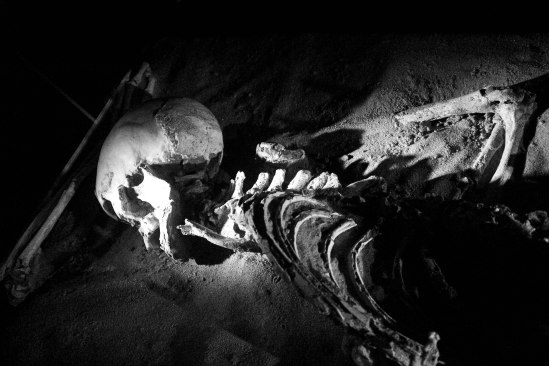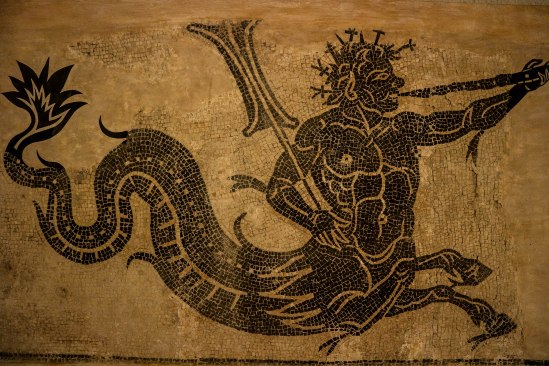With the sea breeze forever sprinkling its oceanic harvest over buildings and people, Cádiz is a salted city. With salty air, salty skin, salty people, this is a siren city; half of the sea, half of the land.

The first to settle on the island were a sea-faring people. Brought to the gates of the Medeterranean, the Phoenicians found here an island identical to their home port in modern day Lebanon, Tyre: a peninsula city, an outcrop of rock surrounded by sea. There they founded Gádir, one of the oldest continuing settlements in all of Europe.

Underneath the labyrinth streets of the modern city, ancient Gádir can still be walked today. In the Archaeological Site of Gadir you will walk through remains dating from nearly 1000 years before Christ. On those streets the Phoenicians threw their rubbish, their broken pots, even their dead animals. There they long lived and died: few by age, some in fight, others by water or in fire. One corpse still remains there, huddling against a wall to protect himself from a fire that devastated the Phoenician settlement.

Others had a more decorous end, their immortality being ensured by tight bandages wrapped around their corpses in the Egyptian fashion, lying in gigantic sarcophagi. In the Museum of Cádiz, two such reposing nobles can be seen today: like husband and wife, they rest there with serene faces, almost smiling. These two time-capsule tombs alone would make the municipal museum worth a visit, but then came the Romans…

The Romans, with their might and artistry.. The Romans, with their religion and engineering. The Romans came, as they did, to conquer and construct, building a sea-side amphitheatre, an industrial fish-salting works, and the Iberian peninsula´s longest, most complicated aqueduct; an epic engineering feat spanning some fifty kilometres from the hills to port city of Gades. Portions of the aqueduct may be seen in the municipal museum, but larger portions remain standing on the isthmus and further inland.

Cádiz is a city eternally looking out to the sea. It is windswept and sun-bleached, its eyes, constantly searching for what the sea might bring, squint from the sun reflected on the water. Cádiz is, like the Roman mosaics left behind in the municipal museum, half-man half-sea creature, shaped as much by water as by land.

With Roman industry came also Roman gods, heroes and emperors. In Gades the God of Wine had a home: Bacchus was his name, or Dionysus to the Greeks, and here his cult of drunkenness, debauchery and frenzy is worshipped now as much as it was then, with the annual Carnaval consuming the city for two weeks of revelry every February. It is this continuation of the ancient Bacchonian tradition, perhaps, which explains the penchant for fiestas across Latin world. In the municipal museum a spectacular mosaic of a young Bacchus is on display, and representations of his tutor Silenus and his goddess wife Ariadne can be seen too.

But when the Romans left Cádiz, leaving behind their language and their letters, new gods from other parts of the Mediterranean came to replace the old – first from Arabia with the Prophet Muhammad, then from Palestine with the Prophet Christ. Today, the single-most defining feature of the gatidiano skyline is the Cathederal, a two-tone monument from whose bell-tower this city can best be seen: a whitewashed city is seen, its buildings form a foam from the sea constantly crashing onto the island. From the white mass of buildings shoot up over a hundred little watchtowers; lookouts from which Cádiz’s wealthy merchants could see the sea’s moods, the sky’s designs.

Cádiz is, like the Juan Luis Vassallo sculpture Gades, a city eternally looking out to the sea. It is windswept and sun-bleached, its eyes, constantly searching for what the sea might bring, squint from the sun reflected on the water. Cádiz is, like the Roman mosaics left behind in the municipal museum, half-man half-sea creature, shaped as much by water as by land.

Want to see more of the south?
Read more articles on southern Spain in the Lives and Times Travel section. Or start here…


Very nice article, Tim, I like it very much, you are a great journalist. Your writing is wonderful and poetical.
LikeLiked by 1 person
Thankyou Celia! I’m about to begin reading your post about homosexuality in Russia, it looks like it’ll be a very interesting piece
LikeLike